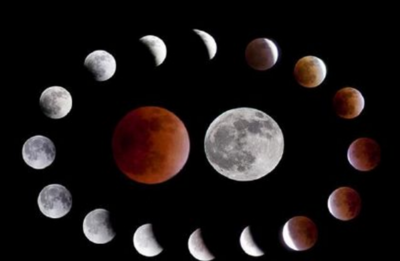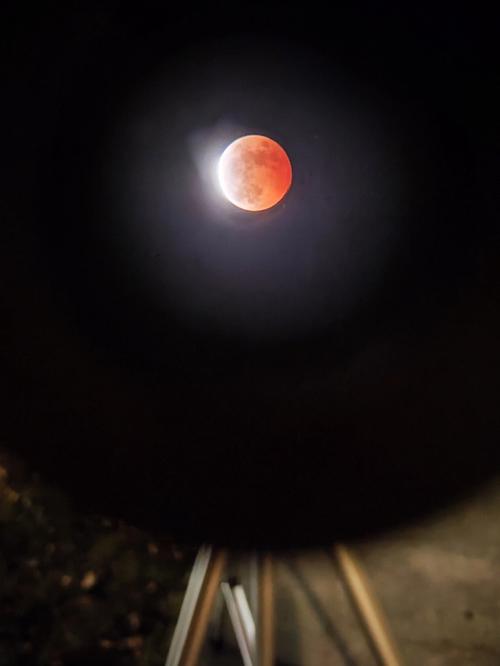On the night of September 7th, 2025, skywatchers around the world were treated to a rare and breathtaking spectacle: a Blood Moon and total lunar eclipse. Beginning at 23:28 UTC on September 7th, the event progressed over several hours, with the entire phenomenon concluding at 04:55 UTC on September 8th. As the moon passed through Earth’s shadow, it gradually transformed into a glowing red orb, a sight that left stargazers in awe.
What Is a Blood Moon and Lunar Eclipse?
A Blood Moon is a term used to describe the reddish hue that the moon takes on during a total lunar eclipse. This occurs when Earth passes between the Sun and the Moon, casting its shadow over the lunar surface. During this time, sunlight is refracted through Earth's atmosphere, scattering the blue light and allowing the red light to reach the Moon. The result is a stunning red-colored moon, earning it the "Blood Moon" moniker.
A Total Lunar Eclipse happens when the Moon is fully covered by the Earth's umbra—the darkest part of its shadow. Unlike partial lunar eclipses, where only a portion of the Moon is shadowed, the entire moon is obscured during a total lunar eclipse. This event is rare and provides a perfect opportunity for scientific observation and a stunning visual display.

Why This Blood Moon Was So Special
This total lunar eclipse, which began at 23:28 UTC on September 7th and ended at 04:55 UTC on September 8th, was especially significant for a number of reasons:
Perfect Alignment: The alignment of the Moon, Earth, and Sun was ideal, allowing the event to be visible from large portions of the Earth, including parts of [insert regions or countries].
Red-Hued Moon: As the Moon moved into the Earth's shadow, it took on a brilliant red color, creating a dramatic visual effect that captivated onlookers. The eclipse lasted over five hours, with the period of totality providing an extended opportunity to witness the red moon.
Visibility and Timing: This eclipse provided optimal viewing conditions, with clear skies in several regions, including [insert cities or countries], allowing millions to witness the event in its full glory.
The Lunar Eclipse Journey: Stages of the Event
The event unfolded in several stages, each with its own unique visual cue:
Penumbra Phase (23:28 UTC): The Moon first entered the outer, lighter part of Earth's shadow at 23:28 UTC. This subtle phase marked the beginning of the eclipse, and observers began to notice a faint darkening of the Moon.
Partial Eclipse (Approximately [insert time]): The Moon moved deeper into the Earth's umbra, and the shadow gradually covered a larger portion of the lunar surface. The contrast between the shadowed and illuminated parts of the Moon became more noticeable.
Total Eclipse (Approximately [insert time for maximum eclipse]): The Moon was fully engulfed in the Earth’s umbra, giving it its iconic red appearance. This phase, which lasted around [insert duration], was the most dramatic and awe-inspiring part of the event.
Exiting the Shadow (04:55 UTC): As the eclipse ended at 04:55 UTC, the Moon slowly began to exit Earth's shadow, and its red color gradually faded, returning to its usual appearance.

Global Observations and Popularity
Millions of people around the world were able to witness this extraordinary event. Observers in [insert regions or countries] enjoyed excellent viewing conditions, with many cities and observatories setting up special events to help the public enjoy the phenomenon. Social media was flooded with stunning images and videos, as skywatchers shared their experiences across platforms like Instagram, Twitter, and Facebook.
Amateur astronomers, in particular, were thrilled by the event. "The Blood Moon is one of the most striking natural phenomena we can observe," said [insert name], an astronomer at [insert institution]. "It’s not only beautiful but also a great way to learn more about the dynamics of our solar system."
Viewing Tips and Safety Guidelines
Lunar eclipses are completely safe to view with the naked eye, unlike solar eclipses, which require protective glasses. No special equipment is needed to enjoy the spectacle, though binoculars or a telescope can enhance the experience by offering a closer look at the Moon’s surface and the various stages of the eclipse.
For optimal viewing, it’s best to find a location with clear skies and minimal light pollution. Many people used online platforms and apps to track the eclipse’s progress in real time, helping them time their observations precisely.

Looking Forward to Future Eclipses
The Blood Moon and total lunar eclipse of September 7-8, 2025, was an event that won’t soon be forgotten, but there are plenty of other lunar eclipses on the horizon. The next total lunar eclipse will occur on [insert upcoming date], offering another opportunity to witness this awe-inspiring spectacle. Astronomers encourage people to keep an eye on the sky, as the universe has many more wonders to offer.
Contact Information:
Name: Neko Zhang
Email: sales7@ihomebox.com.cn
Tel/Whatsapp: +86-15338785619












